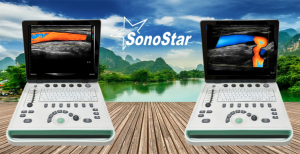Comprehensive Guide to Portable Ultrasound for Musculoskeletal (MSK) Applications
Portable ultrasound technology has revolutionized medical imaging, particularly for musculoskeletal (MSK) applications. Its compact design, wireless capabilities, and high-resolution imaging make it a valuable tool for point-of-care diagnostics and therapeutic interventions.
Contact:
WhatsApp: +8801717 811 312

Why Choose Portable Ultrasound for MSK?
- Portability and Accessibility
- Compact size allows use in clinics, operating rooms, and field settings.
- Ideal for remote or resource-limited areas.
- Cost-Effectiveness
- More affordable than traditional imaging systems like MRI or CT.
- Real-Time Imaging
- Provides instant diagnostic feedback during physical examinations or procedures.
- Dynamic Studies
- Enables observation of joints, muscles, and tendons during movement.
Key Applications in MSK
- Diagnostic Imaging
- Tendons: Identifying tendinopathy, partial or complete tears.
- Ligaments: Diagnosing sprains, tears, or calcifications.
- Muscles: Detecting strains, contusions, and atrophy.
- Joints: Assessing effusions, synovitis, and cartilage damage.
- Nerves: Visualizing compression syndromes like carpal tunnel or ulnar neuropathy.
- Interventional Procedures
- Guided injections for corticosteroids, hyaluronic acid, or platelet-rich plasma (PRP).
- Needle guidance for biopsies or aspiration of fluid collections.
- Therapeutic Monitoring
- Evaluating the healing process of fractures, sprains, or post-surgical outcomes.
- Sports Medicine and Rehabilitation
- Real-time imaging for injury assessment and therapy monitoring.
Choosing the Right Portable Ultrasound Device
Key Features to Look For
- Imaging Quality
- High-resolution imaging for soft tissue and bony structures.
- Color Doppler for vascular assessment.
- Portability and Design
- Lightweight and easy to carry.
- Wireless options for enhanced mobility.
- Ease of Use
- User-friendly interface and preset modes for MSK applications.
- Battery Life
- Long-lasting battery for extended usage.
- Connectivity
- Bluetooth or Wi-Fi for seamless data sharing and integration with other systems.
- Probes and Compatibility
- Linear probes (high-frequency) for superficial structures like tendons and nerves.
- Curvilinear probes (lower frequency) for deeper structures like hip joints.
Tips for Effective MSK Ultrasound Use
- Optimize Settings
- Adjust frequency, depth, and gain to improve image clarity for target anatomy.
- Probe Handling
- Use a firm yet gentle grip for consistent contact and proper angulation.
- Patient Positioning
- Position the patient for optimal access to the target area.
- Interpretation Skills
- Familiarize yourself with normal anatomy to differentiate pathological findings.
- Training and Certification
- Attend courses and workshops to enhance diagnostic and interventional skills.
Conclusion
Portable ultrasound has become an indispensable tool for MSK applications, offering precision, convenience, and cost-effectiveness. By selecting the right device and acquiring the necessary skills, healthcare providers can significantly enhance patient care and outcomes.
